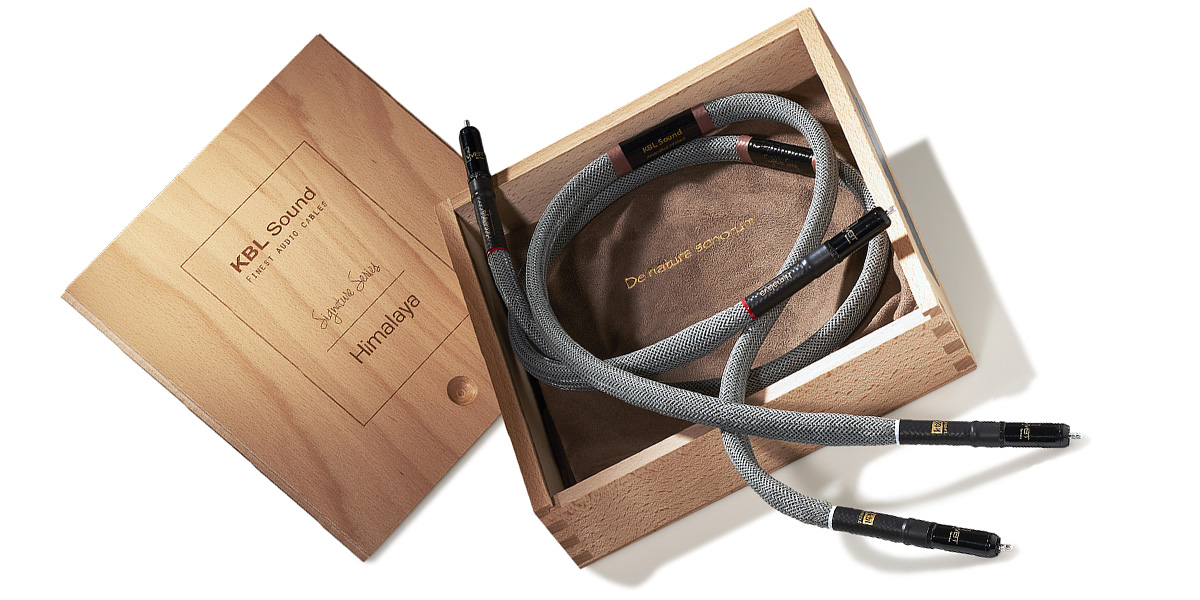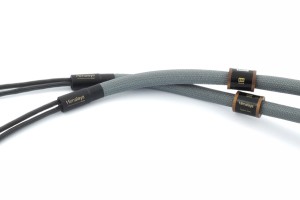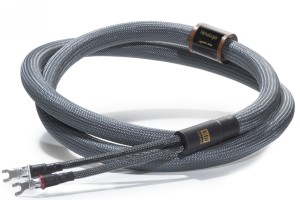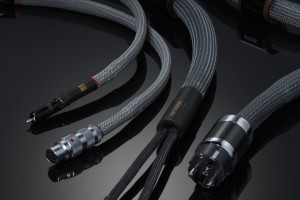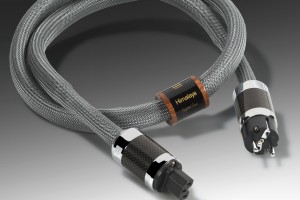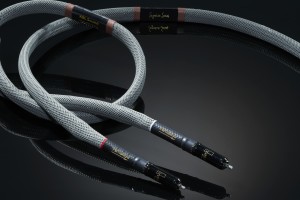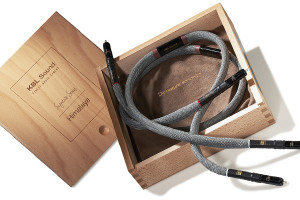There are more and more audio products made in our country able to challenge competitors manufactured by renown brands from all over the world. One of Polish firms offering such high quality products is KBL Sound.
Introduction
Like most of those who actually know this name, I heard about KBL Sound for the first time just few years ago, most likely during Warsaw Audio Show in 2013. It was one of these companies that entered the market with a loud „bang!” Unlike companies that start with less pricey line up and than build their portfolio up adding more advanced, more expensive propositions, KBL Sound offered high end products from the very beginning. Their first line known as Red Eye was described as a “reference” from the get-go. It included a full set of analogue cables and a power distributor. Because of an excellent make&finish, Polish cables could easily match almost any high end product by any brand. Those who had a chance to audition Red Eye in their (usually) truly high end systems confirmed that their performance matched the superb appearance. It’s hard not to admire a company that from the start was able to challenge all the ‘big fish’, especially if it comes from a country with no particular tradition of making high end cables. And that’s exactly what KBL Sound did. From that moment, company has been developing their portfolio adding more product lines, most of them less expensive than Red Eye, that, I have to add, has been also improved and new version has been released recently. I think it was last Holiday when I received news about a new reference series called: Himalaya. After seeing this name I had to ask whether company should have left the name of the highest mountains on Earth for future, maybe even more advanced products, but I got a simple answer to that question: “unless some completely new solutions, technologies or materials are introduced to the market, KBL Sound won’t be able to make cables that could offer even better performance, hence the name”. While designing and making the new flagship series, manufacturer employed the best available materials, the whole knowledge and experience gained while making all previous cables. Therefore, according to the company, there is no room for further improvements (at least for now).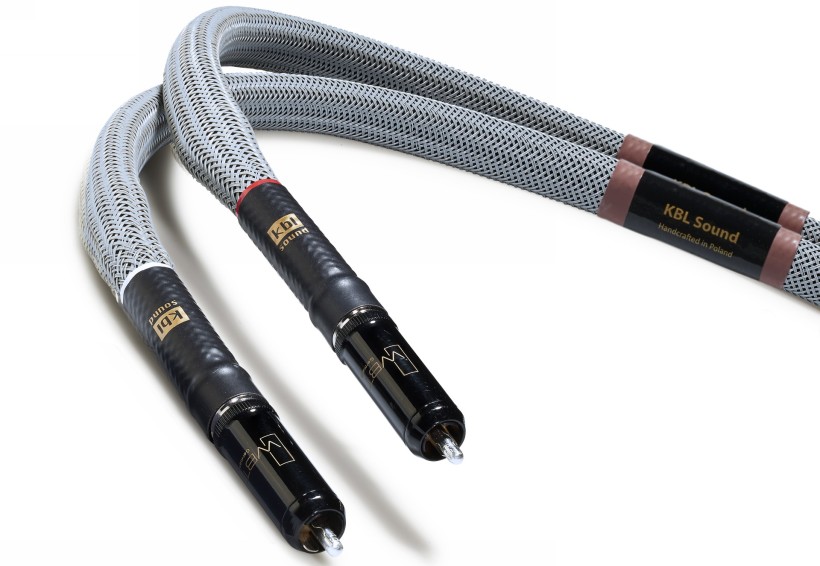
Design
Two materials used for most of audio cables produced today are copper and silver. Some manufacturers use also others, such as: platinum, gold and so on, but majority uses the two mentioned above. KBL Sound is no different in this regard and uses the same materials as well. The top-of-the-line interconnect features a mono crystal silver conductors, same ones as used for previous flagship, Red Eye Ultimate, although there are twice as many conductors and the geometry of the cable is different, more advanced too. The Himalaya IC is shielded against EM and RF interference using few layers of shielding, plus a multi-layer anti-vibration material is used to protect conductors from vibrations coming from outside. Also connectors were chosen for this project with the utmost care, both RCA and XLRplugs feature a minimum contact area. For that purpose WBT 0152 Ag nextgen Signature RCA and Oyaide Focus XLR plugs were chosen. Standard lengths of interconnects include: 1, 1,5, and 2m,whereas other custom lengths are available upon order.Himalaya speakers cables feature mono crystal copper conductors. I had to ask the obvious question: since IC is based on mono crystal silver why SC features mono crystal copper? The answer was again pretty simple: manufacturer prepared prototype cables of silver and copper and the former did not yield any advantages over the latter while being much more expensive. This would, obviously, cause a significant increase in cable’s retail price. The decisive factor here was logically the same level of performance offered by both cables. Since OCC copper was in no way inferior to OCC silver, so there was no reason to use the latter. Product released to the market after extensive tests was made using multi-strand OCC copper conductors arranged in a complex geometry. One can read on manufacturer’s website that: “Their complex geometry completely protects the sensitive signal from the impact of the increasingly ubiquitous electronic smog, or any kind of radiation from the outside. Another feature of this solution is very low inductance, which is favorable for this type of cable.” Designers decided to use Teflon as an insulator, additionally foamed with very fine air bubbles. This material protects conductors from corrosion and at the same time it does not absorb energy of the current flowing through that conductors, as other dielectrics do. Reading further manufacturer’s website one learns that: “The cables have a tuned, experimentally developed resonance absorbing system. It helps to eliminate magnetic distortions generated by the current flowing through the conductors and also mechanical lapping with the environment that disturbs their work. One of its components are anti-vibration rings of selected wood.” Also for speaker cables designer decided to use nextgen WBT connectors. In particular, depending on customer’s choice, WBT 0661 or 0681 nextgen Top-line spades, or WBT 0610 Cu bananas. Standard lengths include: 2x2m, 2×2,5m and 2x3m.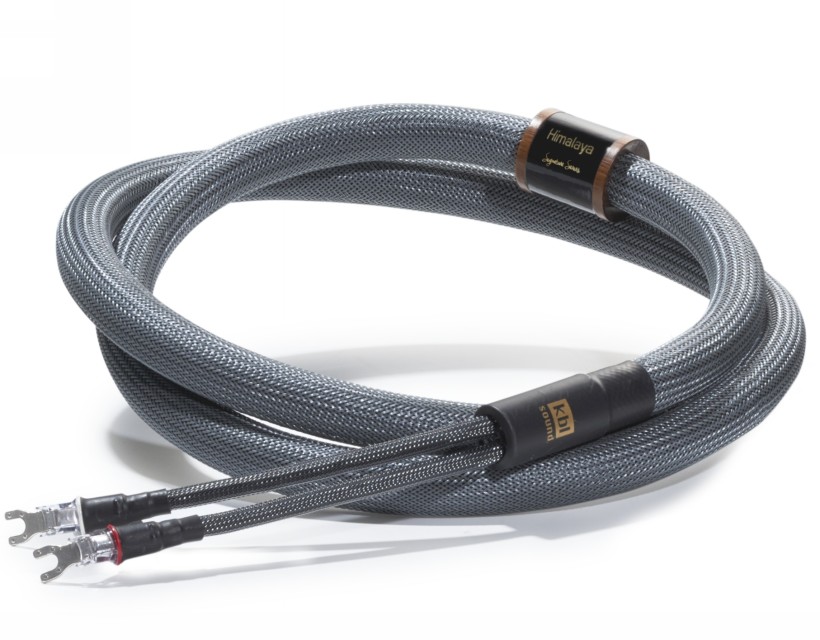 The Himalaya power cable features a mono-crystal copper conductors as well. From the very beginning it was designed to compliment particularly ‘current-hungry’ devices. Hence the diameter of the conductors is doubled in comparison to Red Eye. Again quoting manufacturer’s website: “The conductors have a monocrystalline structure and are additionally protected against oxidation. Himalaya has also a more developed system of maintaining the mechanical stability of conductors and leveling their own resonances caused by the flow of electrons.” The high quality plugs used for this model are custom made – the body is machined out of brass, not stainless steel. All the contact elements are made of reinforced copper and then rhodium plated. The plugs are also cryogenically treated and demagnetized. Standard lengths include: 1,5 and 2m. Upon customer’s order cable might be terminated with IEC 20A Furutech FI-52(R) plug if it is to be used with devices of very high current demand that feature proper socket.
The Himalaya power cable features a mono-crystal copper conductors as well. From the very beginning it was designed to compliment particularly ‘current-hungry’ devices. Hence the diameter of the conductors is doubled in comparison to Red Eye. Again quoting manufacturer’s website: “The conductors have a monocrystalline structure and are additionally protected against oxidation. Himalaya has also a more developed system of maintaining the mechanical stability of conductors and leveling their own resonances caused by the flow of electrons.” The high quality plugs used for this model are custom made – the body is machined out of brass, not stainless steel. All the contact elements are made of reinforced copper and then rhodium plated. The plugs are also cryogenically treated and demagnetized. Standard lengths include: 1,5 and 2m. Upon customer’s order cable might be terminated with IEC 20A Furutech FI-52(R) plug if it is to be used with devices of very high current demand that feature proper socket.
Sound
Himalaya vs Jorma Prime and Statement. By pure accident and just before this test I had a chance to review a set of flagship cables by Swedish high-end brand Jorma. I reviewed interconnects and power cables of Prime line and speaker cables from Statement series (despite the fact that these represent two different lines they are all top Jorma models available at the time). I delayed sending them back to distributor by one day to have a chance for direct comparison with KBL Himalaya loom. At first I compared only interconnects in a head-to-head battle connecting Soulution 541 CD Player with Nagra Melody preamplifer and the latter with Classic Amp by the same Swiss brand. It was exactly the same setup I finished my Jorma review with. Therefore I decided to keep using it especially considering the fact, that I had only a day for this direct comparison. The aforementioned system drove excellent Ubiq Audio Model One loudspeakers. The Swedish cables are in fact almost twice as expensive as Polish ones, and they feature copper conductors (IC Himalaya uses mono-crystal silver). I was surprised, to say the least, while listening to one of Ray Brown’s albums released by Telarc. First of all it was KBL Sound that brought the soundstage closer to me (as compared to Jorma). That created an impression of more intimate contact with music. Jorma cables on the other hand pushed soundstage further away, even behind the line between speakers and yet delivered bigger depth. One of the results of such presentation was richer, more weighty sound of the instruments when played with Himalaya IC (which on this album was most obvious with a trumpet performance). In comparison, the same phantom images placed further away by Swedish cables seemed to offer a bit less rich sound (still well-bodied but to a lesser degree). At the same time the more spacial presentation of Jorma rendered a better impression of room’s (where music was recorded) acoustics. Obviously most of differences described above were in fact noticeable on a nuance level and only during head-to-head comparisons. The KBL Sound interconnect rendered more precise phantom images, while Jorma treated shapes in a more impressionistic fashion, if you know what I mean. Nagra components are very musical ones and as such they were better complemented, in my opinion, by Polish cable, whose more distinct way of presentation combined with Swiss electronics’ features created even richer, more natural and lifelike performance. On the other hand I’d choose more ‘pastel’ sounding Jorma to be used between Soulution’s CD Player and Nagra’s preamplifier, because to my ears its qualities were able to ‘humanize’ the sound of this Swiss Player. Obviously it’s a matter of an individual preference. People who love this amazing transparency and clarity of highly detailed Soulution presentation probably would rather choose Himalaya to preserve, if not enhance, this sonic signature. Let me remind you at this point that Polish cable features silver conductors often associated with rather bright sound. In this particular case sound is definitely not bright, nor even lit up. Yes, it is highly detailed, particularly resolving, open, sparking when needed, but at the same time rich and saturated to the extend where only some high quality copper cables could even compete. As any high quality silver cables, Himalaya IC delivers remarkably smooth performance and yet the leading edge is fast and sharp – no rounding or slowing down when a drum stick hits a cymbal or some other percussion instrument – sound is highly energetic, sometimes even piercing, if recorded so, and yet very natural. If present in the recording, sibilants will be audible but not annoying, just being yet another element of human voice that we are all familiar with.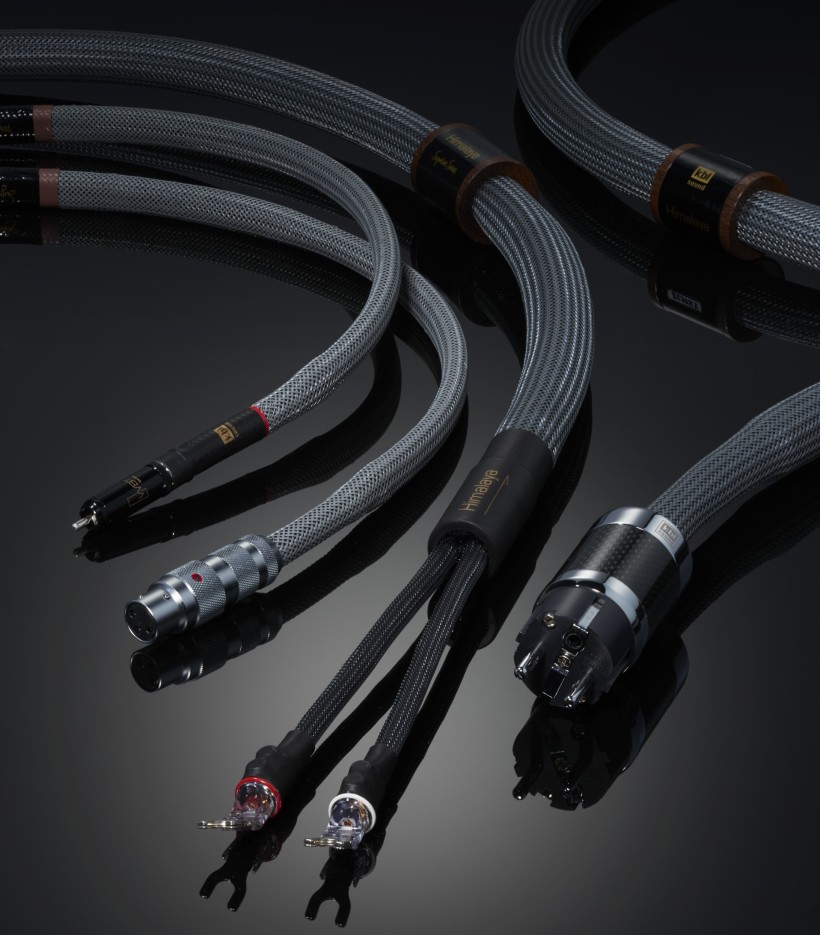 For another stage of this test I used the whole loom – IC, speaker and power cables. It didn’t change the sonic characteristics described above that much, but rather enhanced some features. With the whole set of the Polish cables, phantom images became even better defined in the space, more focused and, as a result the enhanced separation, simply conveyed in a better way. Sound got even richer, instruments and voices had even ‘more’ body now. It wasn’t achieved by shifting tonal balance towards lower regions of the range. None of said images seemed artificially enlarged – there was more ‘body’ but within limits of natural performance. They sounded richer, fuller, more palpable and each of them was also amazingly powerful emitting this crazy amount of energy towards a listener. That’s how I perceive live performances, especially the acoustic ones, that’s what sets them apart from a music that is ‘only’ reproduced by a system. It’s not just about quality and character of the sound that reaches our ears, not of dynamics alone either, but about this incredible physical energy that is released each time a drum stick hits a drum or a cymbal, or a finger plucks a string and so on. That’s one of key differences between live performance and music played even by most sophisticated systems. The speakers I used during this test (hopefully soon I shall have my own pair), the Ubiq Audio Model One are fantastic specialists in this regard (and that’s just one of their numerous qualities) but even they require a signal of appropriate quality. Many cables sort of suck out large chunk of this energy from a signal and then it’s just lost, no speakers can make up for it. Himalaya belong to the other kind – the one that transfers whatever energy amplifier is willing to send out to the speakers and thus such an amazingly energetic and more lifelike performance is even possible.
For another stage of this test I used the whole loom – IC, speaker and power cables. It didn’t change the sonic characteristics described above that much, but rather enhanced some features. With the whole set of the Polish cables, phantom images became even better defined in the space, more focused and, as a result the enhanced separation, simply conveyed in a better way. Sound got even richer, instruments and voices had even ‘more’ body now. It wasn’t achieved by shifting tonal balance towards lower regions of the range. None of said images seemed artificially enlarged – there was more ‘body’ but within limits of natural performance. They sounded richer, fuller, more palpable and each of them was also amazingly powerful emitting this crazy amount of energy towards a listener. That’s how I perceive live performances, especially the acoustic ones, that’s what sets them apart from a music that is ‘only’ reproduced by a system. It’s not just about quality and character of the sound that reaches our ears, not of dynamics alone either, but about this incredible physical energy that is released each time a drum stick hits a drum or a cymbal, or a finger plucks a string and so on. That’s one of key differences between live performance and music played even by most sophisticated systems. The speakers I used during this test (hopefully soon I shall have my own pair), the Ubiq Audio Model One are fantastic specialists in this regard (and that’s just one of their numerous qualities) but even they require a signal of appropriate quality. Many cables sort of suck out large chunk of this energy from a signal and then it’s just lost, no speakers can make up for it. Himalaya belong to the other kind – the one that transfers whatever energy amplifier is willing to send out to the speakers and thus such an amazingly energetic and more lifelike performance is even possible.
Also another previously described observation has now been confirmed – I mean the one regarding soundstage presentation. Polish cables, also as a full set, bring the performance closer to a listener. The front of the stage – usually a vocalist or leading musician – often steps in front of the line between speakers and is rendered in a particularly precise, detailed way. This creates an impression of participation in a musical spectacle that seems to be happening within a grasp of a hand. Jorma cables offered a different, more distant perspective, equally rich and detailed, but presented in a bit less distinctive way.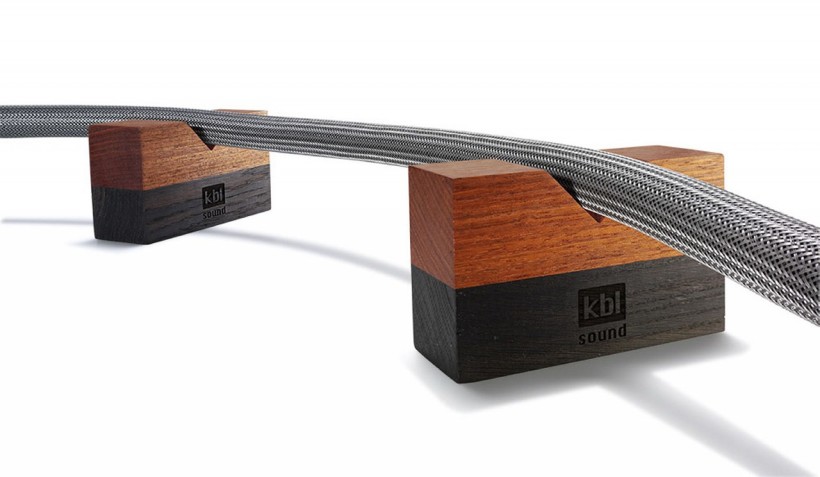 We all have our different preferences, we all use various systems, so choosing between these two sets of remarkable cables would be based on personal taste for certain sonic qualities, or on music genre that one listens to most often, rather than on recognition of clear superiority of one set over the other. If you asked me, for more ‘musical’ components, like those coming, for example, from Nagra, Einstein, or my own Modwright, personally I’d choose KBL Sound Himalaya. But in a case of more ‘audiophile’ sounding ones, like e.g. products made by Soulution, Jorma would be my choice for sure. As far as music tastes go I’d say that those who love jazz and classical quartets, also blues or rock, might really appreciate this particular quality of Polish cables that allows them to create an immersive impression of participating up close in a detailed, precisely rendered musical event full of palpable, of natural sized and weighted instruments and voices. On the other hand, fans of opera and symphonic music fans, which is always presented from a certain perspective, but also those fond of electronic themes full of spacial effects, might rather prefer Jorma’s type of presentation. Obviously that’s just my interpretation of the results of my assessment based, in part, on my own preference. I know people who love to listen to classical quartets sitting far away from the stage, and those who love the first row in an opera house. And it’s fine – whatever makes you happy, whatever allows you to enjoy the music in your way. Choice is yours and I’m just making humble suggestions.
We all have our different preferences, we all use various systems, so choosing between these two sets of remarkable cables would be based on personal taste for certain sonic qualities, or on music genre that one listens to most often, rather than on recognition of clear superiority of one set over the other. If you asked me, for more ‘musical’ components, like those coming, for example, from Nagra, Einstein, or my own Modwright, personally I’d choose KBL Sound Himalaya. But in a case of more ‘audiophile’ sounding ones, like e.g. products made by Soulution, Jorma would be my choice for sure. As far as music tastes go I’d say that those who love jazz and classical quartets, also blues or rock, might really appreciate this particular quality of Polish cables that allows them to create an immersive impression of participating up close in a detailed, precisely rendered musical event full of palpable, of natural sized and weighted instruments and voices. On the other hand, fans of opera and symphonic music fans, which is always presented from a certain perspective, but also those fond of electronic themes full of spacial effects, might rather prefer Jorma’s type of presentation. Obviously that’s just my interpretation of the results of my assessment based, in part, on my own preference. I know people who love to listen to classical quartets sitting far away from the stage, and those who love the first row in an opera house. And it’s fine – whatever makes you happy, whatever allows you to enjoy the music in your way. Choice is yours and I’m just making humble suggestions. Now shortly about some other Himalaya line features that I haven’t discussed thus far. On top of all the qualities described above, these Polish cables offer pretty fast sound as well. During this test I listened many times to a new soundtrack from “The Force Awakens”. As one could expect from John Williams, the music is performed by an orchestra and, in my humble opinion, is simply fantastic. KBL Sound conveyed amazing dynamics, sudden pace changes and both huge scale and power of orchestral performance. When listening to any music of this sort I try to focus on some groups of instruments too, to assess how natural they sound. In this particular case I loved both string and brass ones – as all these sounded lively, natural and as spectacular as one could expect. I mean spectacular in a good way – with natural timbre, texture, dynamics and scale. This performance’s another important aspect was its clarity. We’re often satisfied with this feature until we hear an improvement after replacing an element of a system with even better one. I never blamed my own LessLoss cable set for any problems with sound purity as it was, and still is, very good. And yet the improvement Himalaya introduced in this regard was clear right away and a significant one too. This presentation’s featureis particularly important when it comes to such a huge and complex ‘organism’ as a symphonic orchestra. Clarity of the sound followed by its transparency is a must to properly convey complexity of the music, to allow listener to enjoy it as a whole, to understand composer’s intentions. But at the same time it should allow us to focus on particular groups of instruments and soloists playing along to enjoy their mastery, if that’s what we momentarily want. KBL Sound cables are also amazingly resolving. This element allows even smallest details and subtleties to be enjoyed effortlessly, and I mean all of them – not just tiniest details as such, but also delicate changes in timbre, or dynamics. All of Himalaya’s performance features discussed aboveare considered nowadays paramount for a ‘high-end’ sound. So it’s a good thing that said wires are able to offer them. But unlike some of so-called high-end products, these add two more absolutely key qualities on top of all things – musicality and flow. In this particular cases the staggering resolution and separation, transparency, clarity and abundance of information delivered are not an ultimate goal. All of them serve a purpose – a performance that is amazingly smooth, rich, liquid and organic and thus immersive to the point where a listener forgets about everything other than music and emotions it conveys.
Now shortly about some other Himalaya line features that I haven’t discussed thus far. On top of all the qualities described above, these Polish cables offer pretty fast sound as well. During this test I listened many times to a new soundtrack from “The Force Awakens”. As one could expect from John Williams, the music is performed by an orchestra and, in my humble opinion, is simply fantastic. KBL Sound conveyed amazing dynamics, sudden pace changes and both huge scale and power of orchestral performance. When listening to any music of this sort I try to focus on some groups of instruments too, to assess how natural they sound. In this particular case I loved both string and brass ones – as all these sounded lively, natural and as spectacular as one could expect. I mean spectacular in a good way – with natural timbre, texture, dynamics and scale. This performance’s another important aspect was its clarity. We’re often satisfied with this feature until we hear an improvement after replacing an element of a system with even better one. I never blamed my own LessLoss cable set for any problems with sound purity as it was, and still is, very good. And yet the improvement Himalaya introduced in this regard was clear right away and a significant one too. This presentation’s featureis particularly important when it comes to such a huge and complex ‘organism’ as a symphonic orchestra. Clarity of the sound followed by its transparency is a must to properly convey complexity of the music, to allow listener to enjoy it as a whole, to understand composer’s intentions. But at the same time it should allow us to focus on particular groups of instruments and soloists playing along to enjoy their mastery, if that’s what we momentarily want. KBL Sound cables are also amazingly resolving. This element allows even smallest details and subtleties to be enjoyed effortlessly, and I mean all of them – not just tiniest details as such, but also delicate changes in timbre, or dynamics. All of Himalaya’s performance features discussed aboveare considered nowadays paramount for a ‘high-end’ sound. So it’s a good thing that said wires are able to offer them. But unlike some of so-called high-end products, these add two more absolutely key qualities on top of all things – musicality and flow. In this particular cases the staggering resolution and separation, transparency, clarity and abundance of information delivered are not an ultimate goal. All of them serve a purpose – a performance that is amazingly smooth, rich, liquid and organic and thus immersive to the point where a listener forgets about everything other than music and emotions it conveys.
Also power cables deserve a separate mention. Manufacturer suggests that these were built with particularly power-hungry devices in mind. I used Himalaya with my Gigawatt PF-2 mk2 power distributor and for part of this test it fed the whole system and did a great job. I couldn’t check it with my ISOL-8 Substation Integra though, as it required a different type of connector. Used with Gigawatt, even just this one power cable already added some weight to sound and bit more ‘studio-like’ too, as the sound got better defined, more focused, presented closer to the listener and was more resolving too. Scale of these changes wasn’t quite the same as achieved by powering an amplifier directly with the same cable, but the improvement was obvious enough. I didn’t have any super-power-hungry amp laying around when this test was performed, therefore I was not able to really push Himalaya to its limits. But even with Nagra Classic Amp, my own Modwrigt KWA100SE or Einstein’s The Amp Ultimate I could clearly hear the sound becoming more energetic, richer and deeper when power using Polish power chord. On top of that, phantom images were presented in a more accurate, more precise way, especially those in front of the stage, the background was even more black. This attested to lower level of background noise, which was to be expected from a top-class power cable.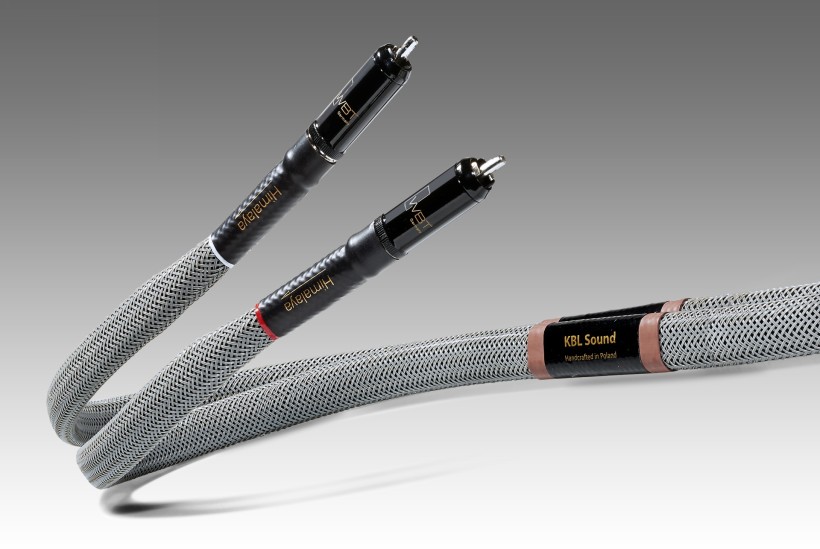
Summary
Let me finish the way I started this review. There are more and more Polish audio products offering high end performance, capable of challenging renown competitors from all over the world. I have no doubts that flagship KBL Sound’s line, Himalaya, belongs to that category. They offer a particularly rich, smooth, impressively resolving and pure sound. They render big, well organized soundstage but, in comparison to the top of the line products by Swedish Jorma, it is presented closet to a listener. Remarkable resolution and a very good selectivity combined with so called: ‘pitch black’ background allow listener to follow even the tiniest details and smallest subtleties in a amazingly natural, effortless way. And since Himalaya render large, full bodied and more precisely enveloped phantom images than those by Jorma, high quality recordings reveal all of their secrets to listeners. One can effortlessly study a mastery of brilliant musicians, or a particular, natural tone of instruments. In my opinion KBL Sound Himalaya are remarkable products! I believe that these could go toe-to-toe with best cables made by renown competitors and probably win at least some of such contests proving that one doesn’t have to spend a (big) fortune on cables for ultimate performance, but that a much smaller one could be enough. Of course they won’t win every music fan, because from some point up the high-end hill choices between fantastic products are made based on individual preferences rather than real performance superiority. So you need to try them for yourself – Himalaya might be the ultimate choice for you but even if they’re not, a new, exciting experience is all you risk.
And one more thing – KBL Sound Himalaya cables get my dreamed, entirely Polish made high end system one step closer to a realization. I don’t have to search for cables for such system anymore.
Associated equipment:
- Loudspeakers: Ubiq Audio Model One
- Amplifiers: Modwright KWA100SE, Nagra Classic Amp
- Preamplifiers: Modwright LS100, Nagra Melody
- Digital sources: Lampizator Big7 and a dedicated PC
- Analog sources: JSikora Basic turntable with Kuzma Stogi S 12 VTA tonearm and AirTight PC 3 cartridge, ESE Labs Nibiru phonostage
- Interconnects: 聖Hijiri HGP-10R “Million”, LessLoss Anchorwave
- Speaker cable: LessLoss Anchorwave
- Power chords: LessLoss DFPC Signature
- Power delivery: ISOL-8 Substation Integra, Gigawatt PF-2 mk2
- Equipment racks: Base VI in main system, Rogoz Audio 3RP3-BBS in analogue system
Retail prices of reviewed components in EUR:
- KBL Sound Himalaya RCA: 4469 EUR/2x1m
- KBL Sound Himalaya SC: 7419 EUR/2×2,5m
- KBL Sound Himalaya PC: 4679 EUR/1,5m
Manufacturer: KBL Sound
Polska wersja testu ukazała się w magazynie HiFiChoice. Zobacz tutaj.


